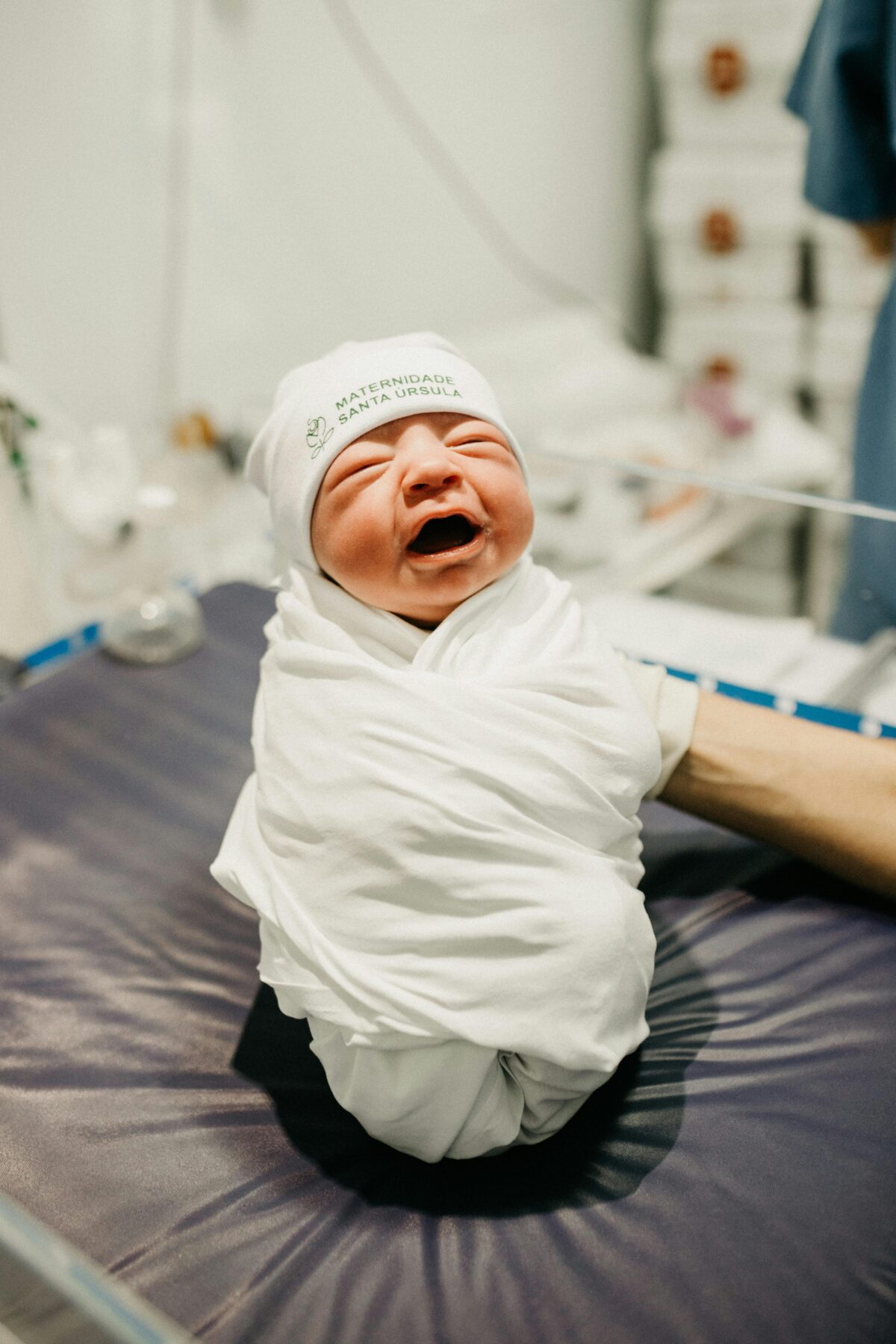Neonatal Respiratory Distress Syndrome – Causes & Treatment
“What is Neonatal Respiratory Distress Syndrome?”
Some newborns, especially preterm infants, may struggle to breathe right after birth.
This condition is known as Neonatal Respiratory Distress Syndrome (RDS).
Today, we will explore the causes and treatment options for RDS.
📌 Introduction
Neonatal Respiratory Distress Syndrome (NRDS) occurs
when a newborn’s lungs are underdeveloped and unable to function properly.
It is most common in preterm infants (born before 37 weeks of gestation)
and can lead to severe oxygen deprivation immediately after birth.
✅ RDS requires intensive care in the Neonatal Intensive Care Unit (NICU).
✅ With early and appropriate treatment, survival rates can improve significantly.
💡 This article will cover the causes, symptoms, treatment, and prevention of NRDS.
Causes and Risk Factors of Neonatal Respiratory Distress Syndrome

Neonatal Respiratory Distress Syndrome (NRDS) occurs
when a newborn’s lungs are underdeveloped and unable to function properly.
This condition is most common in preterm infants (born before 37 weeks gestation)
and is linked to specific risk factors.
1️⃣ Main Causes of NRDS
✔ Surfactant Deficiency
– Surfactant is a lung-produced substance that helps keep the air sacs (alveoli) open
– Preterm infants lack sufficient surfactant, leading to alveolar collapse and breathing difficulties
✔ Immature Lung Tissue
– Before 37 weeks of gestation, the lungs are not fully developed
– Alveoli fail to expand properly, causing oxygen deprivation (hypoxia) and carbon dioxide buildup (acidosis)
✔ Difficulty in Initiating First Breath
– Healthy newborns start breathing immediately after birth
– However, infants with RDS struggle to inflate their lungs, leading to respiratory failure
2️⃣ Risk Factors for NRDS
✔ Premature Birth (Before 37 Weeks)
– The earlier the birth, the higher the risk of surfactant deficiency
– Infants born before 30 weeks have a 60–80% risk of developing RDS
✔ Maternal Health Conditions
– Gestational Diabetes (GDM) → May delay fetal lung maturity
– Preeclampsia or Pregnancy-Induced Hypertension → Increases the risk of preterm birth
✔ Cesarean Section (C-Section) Birth
– During vaginal delivery, pressure on the baby’s chest helps clear lung fluid
– Babies born via C-section may retain more lung fluid, increasing RDS risk
✔ Fetal Hypoxia & Placental Insufficiency
– If the fetus experiences low oxygen levels before birth, lung development may be delayed
✔ Multiple Births (Twins, Triplets, etc.)
– Limited space in the womb and a higher risk of preterm birth
increase the likelihood of RDS in multiple-birth infants
💡 Summary of NRDS Causes & Risk Factors
✔ Surfactant Deficiency → Leads to alveolar collapse & respiratory distress
✔ Immature Lungs → Oxygen exchange is inefficient, causing hypoxia
✔ Preterm Birth (Before 37 Weeks) → The earlier the birth, the higher the RDS risk
✔ C-Section & Maternal Health Issues → Can delay fetal lung development
NRDS requires immediate medical intervention,
so understanding the risk factors and taking preventive measures is essential.
Symptoms and Diagnosis of Neonatal Respiratory Distress Syndrome
Neonatal Respiratory Distress Syndrome (NRDS) can progress rapidly after birth,
requiring immediate diagnosis and treatment.
Close monitoring of respiratory distress symptoms is crucial.
1️⃣ Key Symptoms of NRDS
✔ Respiratory Distress Symptoms
– Rapid breathing (over 60 breaths per minute), irregular breathing
– Chest retractions (ribs and sternum visibly pulling inward during breaths)
– Grunting sounds → Baby struggles to keep airways open
✔ Cyanosis (Bluish Skin Discoloration)
– Blue or purplish tint on lips, hands, or feet → Indicates oxygen deprivation
– Severe cases may show generalized cyanosis, requiring urgent oxygen therapy
✔ Use of Accessory Muscles for Breathing
– Intercostal (rib) and sternal muscles are overused during breathing
– Baby expends excessive energy just to breathe due to lung immaturity
✔ Lethargy & Feeding Difficulties
– Newborn appears weak, fatigued, and struggles with feeding
– Temperature regulation issues & apnea (temporary breathing pauses) may occur
⚠ RDS symptoms can worsen rapidly, requiring immediate medical attention.
2️⃣ Diagnostic Methods for NRDS
✔ Physical Examination
– Respiratory rate, cyanosis, and chest movements are assessed
– Presence of grunting, nasal flaring, or chest retractions
✔ Pulse Oximetry (Oxygen Saturation Test)
– Measures oxygen levels in the blood to detect hypoxia
– Normal: 95–100% / RDS Infants: Below 85%
✔ Blood Gas Analysis
– Checks oxygen & carbon dioxide levels to diagnose hypoxia and acidosis
– CRP & white blood cell count help rule out infection or sepsis
✔ Chest X-ray Examination
– “Ground Glass Appearance” (hazy lung opacity) suggests RDS
– Incomplete lung expansion with air bronchograms is a common finding
✔ Surfactant Deficiency Test
– Amniotic fluid or bronchoalveolar lavage (BAL) analysis may confirm surfactant deficiency
💡 Summary of NRDS Symptoms & Diagnosis
✔ Recognize early signs → Rapid breathing, cyanosis, grunting, and chest retractions
✔ Confirm hypoxia with pulse oximetry & blood gas tests
✔ Use chest X-rays to evaluate lung expansion
✔ Surfactant analysis may be needed for diagnosis
NRDS requires immediate medical intervention,
and rapid diagnosis is critical for improving survival rates.

Treatment and Management of Neonatal Respiratory Distress Syndrome
Neonatal Respiratory Distress Syndrome (NRDS) requires immediate treatment
to support breathing and promote lung development in preterm infants.
1️⃣ Main Treatment Options for NRDS
✔ Oxygen Therapy
– Supplemental oxygen is provided to prevent hypoxia (low oxygen levels)
– Mild cases: Nasal cannula or oxygen mask
– Severe cases: Continuous Positive Airway Pressure (CPAP) or mechanical ventilation
✔ Surfactant Therapy
– Surfactant is directly administered into the infant’s airway to keep alveoli open
– Given within the first 2 hours after birth for best outcomes
– Helps prevent alveolar collapse and improve breathing
✔ Positive Airway Pressure (CPAP) & Mechanical Ventilation
– CPAP (Continuous Positive Airway Pressure): Helps preterm infants breathe on their own
– Mechanical ventilation: Used when infants cannot breathe independently
✔ Fluid & Electrolyte Management
– Due to feeding difficulties, IV fluids are provided for hydration
– Electrolyte balance must be carefully monitored
✔ Blood Pressure & Infection Control
– Low blood pressure is managed with medications and fluid therapy
– If infection is suspected, antibiotics may be administered
2️⃣ Post-Treatment Recovery & Long-Term Care
✔ Monitoring in the Neonatal Intensive Care Unit (NICU)
– Temperature regulation, oxygen levels, and infection prevention
– Frequent blood gas analysis and oxygen saturation monitoring
✔ Gradual Weaning from Respiratory Support
– Oxygen levels are slowly reduced as the baby’s lungs strengthen
– Mechanical ventilation is gradually decreased to encourage independent breathing
✔ Nutritional Support & Feeding Adjustments
– Proper nutrition is essential for lung growth and development
– If feeding difficulties persist, tube feeding may be necessary
💡 Summary of NRDS Treatment & Management
✔ Oxygen therapy & CPAP/mechanical ventilation → Prevents hypoxia
✔ Surfactant administration → Prevents alveolar collapse & improves breathing
✔ IV fluids & electrolyte balance → Ensures proper hydration & metabolism
✔ NICU care & gradual respiratory support reduction → Supports lung recovery
With timely and appropriate treatment, the survival rate of infants with NRDS significantly improves.
Early medical intervention plays a crucial role in ensuring healthy lung development.

Prevention and Conclusion for Neonatal Respiratory Distress Syndrome
Neonatal Respiratory Distress Syndrome (NRDS) is a common complication in preterm infants,
but its risk can be reduced through proper prenatal care and medical interventions.
Early treatment after birth also significantly improves outcomes.
1️⃣ How to Prevent NRDS
✔ Antenatal Steroid Therapy (For Lung Maturity)
– Betamethasone is administered to pregnant women at risk of preterm birth
– This stimulates fetal surfactant production, reducing the risk of RDS
– Typically given between 24–34 weeks of gestation if preterm birth is expected
✔ Enhancing Fetal Lung Maturity Through Nutrition
– Studies suggest that maternal nutrition (Vitamin A & D) plays a role in surfactant production
– Balanced maternal diet supports fetal lung development
✔ Preventing Preterm Birth & Maternal Health Management
– Managing conditions like gestational diabetes & hypertension helps lung maturation
– Immediate medical care is needed for premature rupture of membranes (PROM)
✔ Ensuring NICU Care Availability for Preterm Births
– If preterm birth is anticipated, delivery should occur in a hospital with NICU facilities
– Immediate oxygen support and surfactant therapy must be available
2️⃣ Long-Term Management After NRDS Treatment
✔ Monitoring for Chronic Lung Disease (BPD)
– Some preterm infants develop bronchopulmonary dysplasia (BPD) post-RDS treatment
– Ongoing respiratory support & rehabilitation therapy may be required
✔ Boosting Immunity & Preventing Infections
– Preterm infants have weaker immune systems, so RSV (Respiratory Syncytial Virus) immunization is recommended
– Flu and pneumococcal vaccinations are essential to prevent lung infections
✔ Nutritional Support & Growth Monitoring
– High-calorie, high-protein diets support lung development in preterm infants
– Regular developmental assessments & growth monitoring are needed
🔥 Conclusion & Key Takeaways
NRDS can be managed effectively through prenatal prevention and rapid postnatal intervention.
With advances in neonatal care, timely treatment significantly improves survival rates and outcomes.
🎯 Key Strategies for NRDS Prevention & Management
✔ Antenatal steroid therapy for lung maturity
✔ Maternal health management to prevent preterm birth
✔ Immediate NICU intervention for oxygen & surfactant therapy
✔ Long-term lung health monitoring & infection prevention
💡 NRDS is a treatable condition with proper medical care.
Early intervention and comprehensive neonatal care ensure a healthy future for preterm infants.




